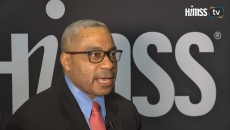Quality and Safety
All types of hospitals made the list, from small community facilities to major teaching hospitals, delivering satisfaction and operational efficiency.
More older adults in the ED is a bad sign for patients but also for providers, who often struggle with costs and utilization.
Haiqing Song, deputy director of the neurology program at the Xuanwu Hospital, Capital University of Medical Sciences in China, discusses what is needed to effectively leverage technology.
New care models are giving rise to emerging security threats, according to Josh Mayfield, director of security strategy at Absolute.
End-of-shift handoffs pose a substantial patient safety risk, and have been linked with delays in diagnosis, medication errors and longer stays.
In 2017, more than 119,000 bloodstream staph infections occurred and 20,000 people died from them. What's more, a rise in the infections could be due to rampant opioid use.
In an effort to elevate the infosec dialogue, John Muir Health CISO Tom August created a bingo card that includes terms such as artificial intelligence, machine learning, DevSecOps and threat hunting.
AI and cloud computing can open new fields for big data, analytics and research on large multimodal cohorts, according to Arterys CEO Fabien Beckers.
Investing in social determinants of health holds the potential to provide ROI in the form of fewer readmissions-based penalties.
Special Agent M.K. Palmore explains how healthcare organizations can get involved with the FBI to tackle cyber-security threats.




